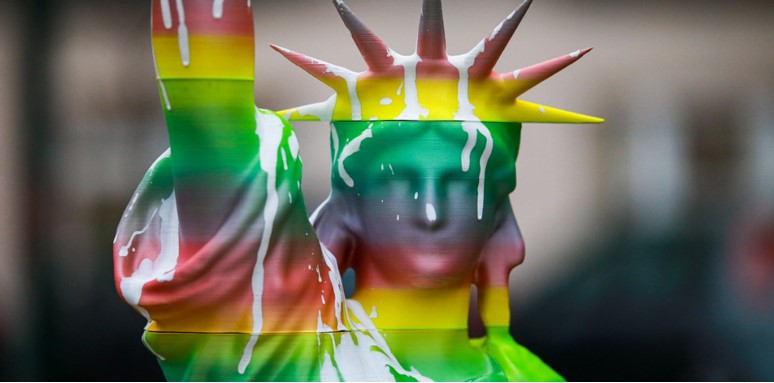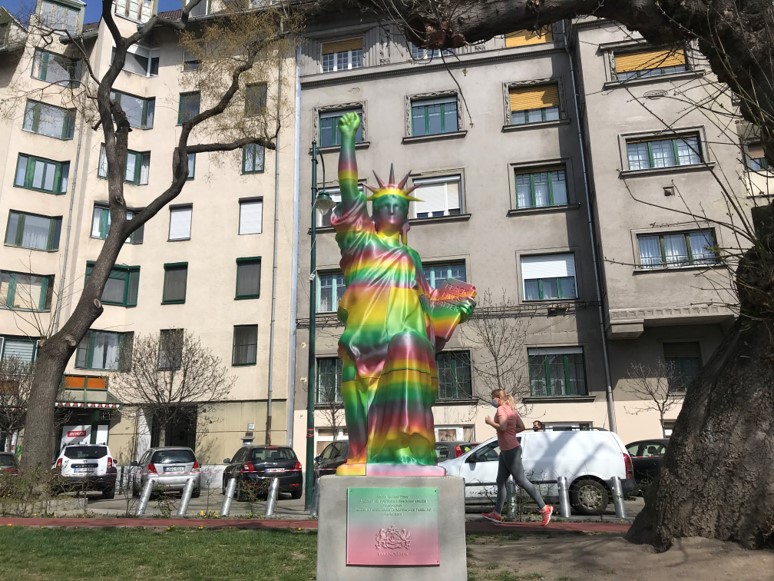Péter Szalay, Artist & Creator of 'Black Lives Matter' Sculpture in Budapest
- 29 Apr 2021 1:07 PM

His latest sculpture won the Ferencváros' tender for public art and much attention from Hungarian media due to the Black Lives Matter theme.
He agreed to tell us more about his trajectory as an artist and this attention to his latest work. Read more about local BLM topic here.
1. First of all, talking about your artistic background, what do you feel you still need to deliver in the Hungarian and global art scope?
The actors determining the direction of global contemporary art are impacted by the BLM movement, the growing interest for black artists is also clear. For there aren’t many black people in Hungary, this tendency is not typical by us. In Hungary, art is funded from state’s money.
This has changed a lot during the last years, thanks to commercial galleries and civil initiatives. By us, the art scene has broken into two sides. One is the official, state’s art, and the other is the critical one.
Because of the restrictions and closing of the galleries, taking place for a year a large number of artists struggles with serious existential problems.
2. What excites you the most about creating sculptures?
I’m interested in different things, just like our world is colorful. I like playing with geometry, I prepare kinetic sculptures but I also use found objects and I continue to question what is art, what does sculpture mean today.
With my objects, I give answers to these questions that are valid at that moment, but as I go further with my life, these answers are always different.
3. What motivated you to participate in the District IX tender on public art?
There are very few public art tenders announced lately.This was a rare opportunity to reach a wider public. I didn’t want to miss it out.

4. What was the inspiration behind the BLM sculpture? And how was the process of creation?
In Hungary, public sculpture is a heavily tainted medium, traditionally it was the tool of representation of power typically with the aim of mediating state’s propaganda.
What happens to us is the opposite of the USA, where sculptures canonised actors of finished history are teared down because of their sins that were forgiven earlier.
With its rememberance politics, the Hungarian government is relativising Hungarian responsibility for taking part in the Holocaust and other hecatombs. For instance, they set up a sculpture for Miklós Horthy and they place the Turul bird which was the symbol of the Arrow Cross Party who committed war crimes. This makes many scared.
My goal was to reflect on these problematic public sculptures by creating a work that is able to put new light on the problem by using symbols that are stranger for us. It shows ironically the dangers of manipulating with our national symbols.
The sculpture itself was edited together from open source 3D stocks, and prepared by 3D printing on my own desk printer using rainbow colored PLA plastic.
5. When you finished the piece, what was your first thought, and what did you think would be the opinion of the public?
One could count on politicians exploiting the sculpture for their own purposes as an alibi to scan their own messages. The title of the work is Prism, alluding to the diversity of points of view and opinions. I was curiously listening to the different interpretations , reactions. To me, these all belong to public art work.
6. What was your reaction when you saw the piece destroyed in the morning after it was exhibited in Ferenc Tér?
This huge press interest towards me is unusual and exhausting. Despite being prepared for the tearing down of my sculpture, it was a bad feeling to live it through. This anger rooted in fear that can be felt in society and manifested during the project is frightening.
I find it ironic that while the BLM movement is pulling down sculptures Overseas, a sculpture like this is pulled down here by us.

7. What is your opinion regarding free speech and art expression in Hungary?
I don’t feel restricted in my artistic freedom, I don’t belong to any political groups. As the Hungarian Academy of Art is expecting its members to to be loyal to the actual state’s administration, and they have disposal of most of the financial sources, therefore artists of my own sort cannot count on state’s support.
Fortunately, the commercial sector is in development, commercial galleries and art collectors take more and more charge of keeping up critical, free art.






















